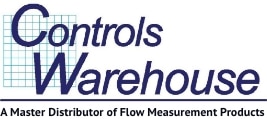Air, Steam, Compressed Gas, Natural Gas
We can handle most of your gas flow applications. Everything from air, carbon dioxide, and refrigerants to fuel gases like methane and natural gas. We just need some basic information about your gas flow to get started.
When we provide a flowmeter to measure gas flow, we need to know what is actually flowing through the meter. The key word here is ‘actual’, which is the ‘A’ in ACFM (Actual Cubic Feet per Minute). The only time ACFM and SCFM are the same is when the line pressure is 0 psig, which never happens because 0 psig = no flow.
In order to size a flow meter properly, we need the following information to determine the actual flow rate:
- Flow rate in SCFM
- Line pressure
- Line Temperature
We then use the following formula:
ACFM = SCFM x ((460+Temperature (F))/530) x (14.7/(14.7+psig))
For our steam applications we prefer our Niagara Force Meter. Flow is measured in terms of dynamic force acting on a target in the flow stream. A hermetically sealed strain gage is bonded in a bridge circuit configuration and mounted outside the flow stream. When force is applied to the target this translates to an electrical output that is proportional to the flow rate. The Force Meter is available with 2-wire and 3-wire transmitters. The 2-wire loop powered meter with a 4-20mA output and HART communication has a turndown ratio of 15:1, and is used where 2-wire loop powered is required. The 3-wire has a power, signal (4-20mA and HART communication), and ground connection. With more power available, the meter produces a higher signal-to-noise ratio, minimizing electrical interference. This increases the turndown ratio to 20:1, allowing lower flow rates to be measured.
